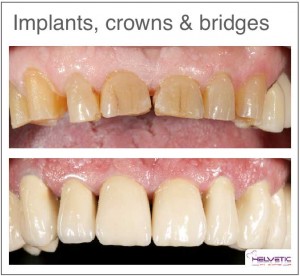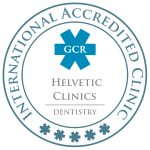Differences in the cost of dental care among different countries do not in any way reflect the quality of care but are a combination of multiple factors, including the local cost of living (wages, rents) and other factors. Take, for example, the case of dental implants cost.
Dental implants cost
The price of a dental implant depends on factors such as:
- The brand of the implant, generally related to the amounts invested in research and development and the place of production of the implant.
- The notoriety of the dental clinic or dentist.
- The volume of implants per year to qualify for discounts.
Depending on the implant brand and the reputation of the dentist or dental clinic:
- Dental implants cost in the UK: between 950 £ and 2000 £
- Ireland: between 1200 € and 3000 €
- Switzerland: between 1800 € and 4500 €
- Belgium: between 1200 € and 3200 €
- Hungary: between 680 € and 1200 € / 590 £ to 1050 £
At Helvetic Clinics in Budapest, we offer 3 different Implants (including abutment and healing screw):
- Megagen at 680 € / 580 £
- Astratech at 990 € / 850 £
- and the highest quality implant from Straumann, the SLActive implants* at 1240 € / 1030 £
*The price for this type of implant generally varies from 2500 to 4500€ / 2150 to 3900 £ in the rest of Europe!
Dental Implants – Description

After a certain time (2 to 5 months, depending on each patient), the jaw bone will grow around the implant and allow its consolidation (osseointegration).
At this point, the artificial teeth, final crowns or bridges, can be placed on the dental implant. This is known as “the loading of the implant”.
Dental Implants Brands
Check here on our implant brands.
Are dental implants suitable for everyone?

1. The general condition of the patient: there are several medical risk factors against having dental implants. The most common ones are smoking and diabetes. It does not mean that these patients cannot receive dental implants, but that the risk of failure is higher and patients need to be aware of it.

Possible Implant Prosthetics
2. The general condition of the mouth: the rest of the teeth and gums must be stable, before considering to place dental implants that are likely to “work”.
If certain teeth are decayed or broken, or if the gums are sick, it is advisable to treat these before placing dental implants.
3. The quality and quantity of the jawbone: without a sufficient bone thickness, it is difficult to place implants. In order to determine the necessary volume of the bone mass required for a dental implant to be inserted, an OPG Xray is needed, but for a more accurate assessment, a CT-scan might be useful to obtain a three dimensional image.
Of course our dental clinics are equipped with OPG X-rays as well as 3D CT Scan machines.
Samtímis ísetning implanta og álagssetning
Ef munnheilsa þín er góð og magn og þykkt tannbeins leyfir, er stundum hægt að draga tennur, setja implönt og koma fyrir bráðabirgða tanngervi, í einni aðgerðarlotu í sömu ferð. Þetta gerir þér kleift að fara aftur heim til lands þíns með bæði implönt og bráðabirgða krónur komnar á. Hins vegar er í sumum tilvikum nauðsynlegt að aðgreina aðgerðirnar: fjarlæging tanna, ísetning implanta og ásetning bráðabirgða króna. Við hjá Helvetic Clinics munum alltaf gera okkar besta til að nýta tíma þinn vel og spara þér auka ferðir.

Roger C. March 2014
Helvetic Clinics Budapest, Hungary
Drs. Laszlo Lukacs (implants) & Peter Lukacs (crowns & bridges)
5 Alphabio implants, 11 porcelain fused to metal crowns, 3 times 3 unit bridges, 19 teeth in total
The dentist will make an incision in the gum to expose the jawbone where the dental implant would be placed before closing the incision.
Afterwards, it is necessary to wait between 3 to 6 months in order to obtain a sufficient healing and calcification around the implant. In fact, this healing process includes the fusion between the jawbone and the implant, known as osseointegration.
This unification will provide a strong structure that will then be used in the second phase of the process.

The dentist can then fix one or more dental prosthesis on the abutment of the dental implant.
The advantages of dental implants
Dental implants provide several advantages compared to other teeth replacement options. In addition to the comfort and aesthetics, your implants will act like your natural teeth. Implant bridges are fixed without any support from adjacent natural teeth, therefore preserving them.
Furthermore, dental implants replace some of your dental roots, thereby preserving the jaw’s bone mass, whereas if you don’t put an implant, and put a fixed bridge or partially removable prosthesis, the bone which is no longer surrounded by the roots would tend to resorb. Implants can support crowns, bridges and dentures.
The dental implants integrated in your jaw contribute to maintaining the bone healthy and intact. In the long run, to conclude dental implants are esthetic, functional and comfortable.
For your dental implants, no compromise, check what our patients say.




















